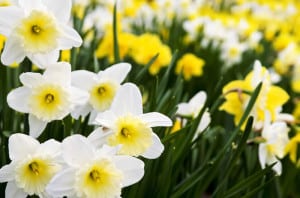Once again, thanks to those lovely and oh-so-knowledgeable folks at Sloat, here is what needs doing in the garden in May. If you live in Northern Ca. Of course since we have a miserable drought and scorching hot weather (90 in April...really!) I recommend mixing yourself a gin and tonic. It won't alleviate the drought, but it makes watching your garden wilt a little easier to take. Just a little.
May
- Plant annuals like petunias, marigolds, begonias, lobelia, salvia and zinnia.
- Re-seed radishes, carrots and beets.
- Plant late summer edibles like pumpkins, squash, sunflowers, peppers, basil and melons.
- Select garden-ready dahlias, perennials, hydrangeas, and hanging baskets.
- Fertilize rhododendrons, azaleas and camellias with E.B. Stone Organics Azalea, Camellia & Gardenia Food.
- Give vegetables a boost with E.B. Stone Organics Tomato and Vegetable Food.
- Feed containers and hanging baskets with Maxsea All Purpose fertilizer.
- Plant new containers with E.B. Stone Formula 420 to provide the best moisture holding capacity.
- Prune spring-flowering shrubs after bloom is past. Prune spring flowering Clematis to control size and shape.
- Mulch vegetable and flower beds with Sloat Forest Mulch Plus to control weeds and conserve moisture.
- Freshen up containers and replace spent annuals with colorful 4-inch perennials such as verbena, calibrachoa, coleus, bacopa and ipomoea.
- Don’t forget mom on Mother’s Day! We have blooming flowers, gift cards, and hanging baskets.
- Check out our selection of specialty hand tools, gloves and sun protective hats.
- Release ladybugs and other beneficial insects to help control aphids, mites, whiteflies, and other garden pests.
- The spittle bugs have returned! Learn more. >
- Stake tall perennials such as Dahlias.
- Use beneficial nematodes to manage grubs in your lawn
- Deadhead spring bulbs but leave the foliage until it turns yellow.
- Pinch back late summer and fall perennials to promote better flowering, especially mums and asters.
- Check your hose fittings for spent washers and leaks. Ensure your hose has a shut off valve or other water conserving feature. Consider a soaker hose to conserve water in your vegetable garden.






